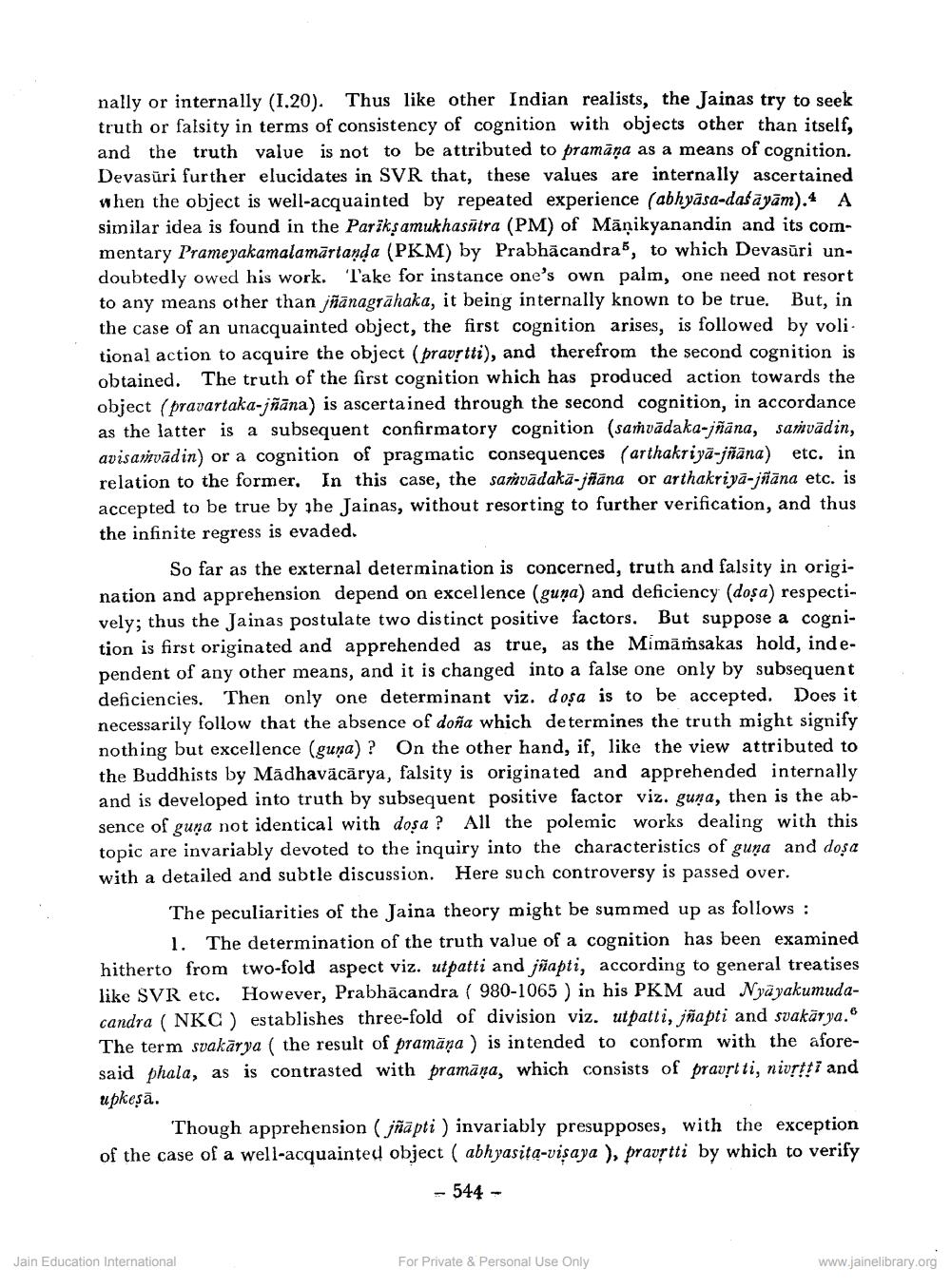Book Title: Some Remarks on The Pramanyavada of Jainism Author(s): Atsushi Uno Publisher: Z_Kailashchandra_Shastri_Abhinandan_Granth_012048.pdf View full book textPage 3
________________ A nally or internally (1.20). Thus like other Indian realists, the Jainas try to seek truth or falsity in terms of consistency of cognition with objects other than itself, and the truth value is not to be attributed to pramāņa as a means of cognition. Devasuri further elucidates in SVR that, these values are internally ascertained when the object is well-acquainted by repeated experience (abhyasa-datāyām). similar idea is found in the Parikṣamukhastra (PM) of Manikyanandin and its commentary Prameyakamalamartanda (PKM) by Prabhäcandra, to which Devasüri undoubtedly owed his work. Take for instance one's own palm, one need not resort to any means other than jäänagrähaka, it being internally known to be true. But, in the case of an unacquainted object, the first cognition arises, is followed by voli. tional action to acquire the object (pravṛtti), and therefrom the second cognition is obtained. The truth of the first cognition which has produced action towards the object (pravartaka-jääna) is ascertained through the second cognition, in accordance as the latter is a subsequent confirmatory cognition (samvadaka-jñāna, samvadin, avisamvadin) or a cognition of pragmatic consequences (arthakriya-jääna) etc. in relation to the former. In this case, the samvadakā-jätäna or arthakriya-jääna etc. is accepted to be true by the Jainas, without resorting to further verification, and thus the infinite regress is evaded. So far as the external determination is concerned, truth and falsity in origination and apprehension depend on excellence (guga) and deficiency (dosa) respecti vely; thus the Jainas postulate two distinct positive factors. But suppose a cognition is first originated and apprehended as true, as the Mimamhsakas hold, independent of any other means, and it is changed into a false one only by subsequent deficiencies. Then only one determinant viz. doșa is to be accepted. Does it necessarily follow that the absence of doña which determines the truth might signify nothing but excellence (guya)? On the other hand, if, like the view attributed to the Buddhists by Madhavacarya, falsity is originated and apprehended internally and is developed into truth by subsequent positive factor viz. guya, then is the absence of guya not identical with dosa? All the polemic works dealing with this topic are invariably devoted to the inquiry into the characteristics of guga and doja with a detailed and subtle discussion. Here such controversy is passed over. The peculiarities of the Jaina theory might be summed up as follows: 1. The determination of the truth value of a cognition has been examined hitherto from two-fold aspect viz. utpatti and japti, according to general treatises like SVR etc. However, Prabhācandra (980-1065) in his PKM aud Nyayakumudacandra (NKC) establishes three-fold of division viz. utpatti, jñapti and svakärya." The term sakarya ( the result of pramaşa) is intended to conform with the aforesaid phala, as is contrasted with pramaga, which consists of prauptti, niort and upkesa. Though apprehension (jääpti) invariably presupposes, with the exception of the case of a well-acquainted object (abhyasita-visaya), praertti by which to verify - 544 Jain Education International For Private & Personal Use Only www.jainelibrary.orgPage Navigation
1 2 3 4 5 6 7
